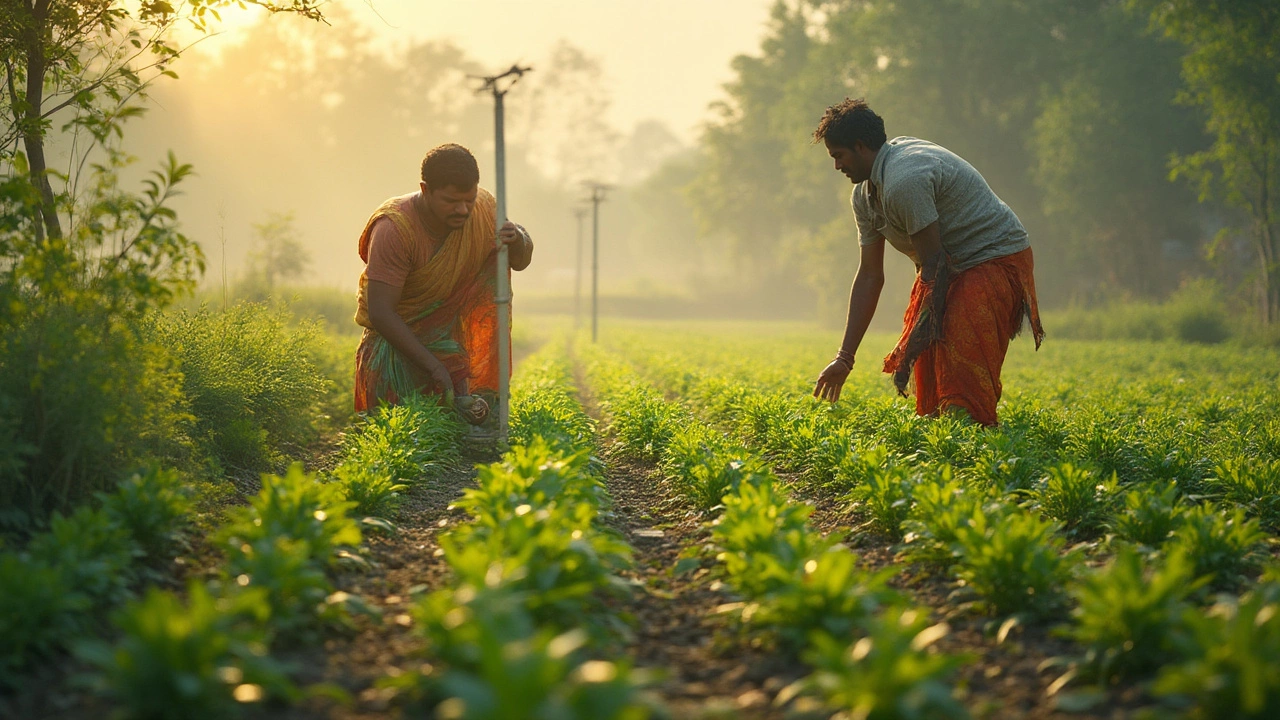Drip irrigation saves water and boosts yields, but it’s still rare in many areas. Let’s get real about why and bust some myths around it.
Irrigation Systems for Indian Gardens and Farms: Types, Tips, and Fixes
When it comes to growing food or flowers in India, irrigation systems, the methods used to deliver water to crops and plants. Also known as watering systems, they make the difference between a thriving garden and a dry, disappointing patch of soil. In a country where rain is unpredictable and water is precious, how you deliver water matters more than almost anything else. Whether you’re growing tomatoes on a balcony or rice in a field, the right system saves time, money, and plants.
Not all irrigation systems are the same. drip irrigation, a method that slowly drips water right at the plant’s roots. Also known as micro-irrigation, it’s the most efficient choice for home gardens and small farms. It cuts water waste by up to 60% compared to old-school flooding or spraying. But even drip systems fail—clogged emitters, uneven flow, cracked pipes. That’s why so many posts here fix real problems: why emitters stop working, how to flush lines, and how to spot leaks before your plants suffer. Then there’s sprinkler systems, overhead spray setups that mimic rain. Also known as flood irrigation when used in fields, they’re common in larger farms but waste water to evaporation and wind. In hot, dry places like Rajasthan or Gujarat, sprinklers can lose half their water before it even hits the ground. That’s why smart gardeners are switching to drip or soaker hoses.
What you choose depends on your space, crops, and water supply. Balcony gardeners need lightweight, low-pressure systems. Farmers with acres need durable, scalable solutions. And everyone needs to know how to maintain their setup. You’ll find posts here that explain how to fix clogged drip lines, how to pick the right emitter flow rate, and even how to build a simple, cheap irrigation setup from recycled bottles. You’ll also see how water needs change with the season—monsoon vs. summer, for example—and why timing matters more than you think. Watering at noon burns leaves. Watering at night invites mold. The best systems don’t just deliver water—they deliver it at the right time, in the right amount, and to the right place.
There’s no one-size-fits-all fix. But with the right system and a little know-how, you can grow more with less. Below, you’ll find real-life fixes, beginner-friendly guides, and smart upgrades that actually work for Indian conditions—no fluff, no theory, just what helps your plants thrive.
